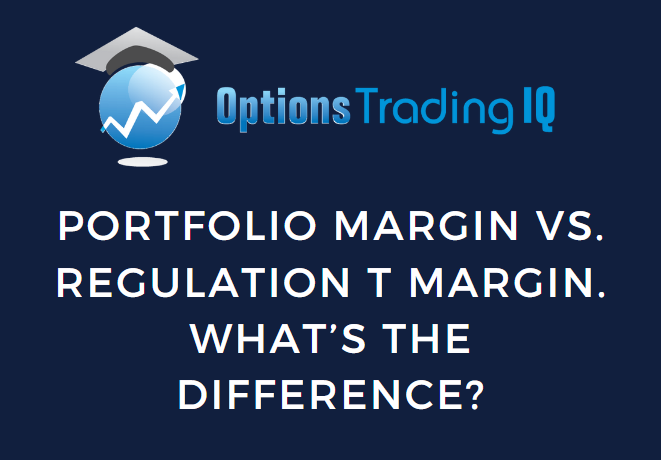

Contents
This article will discuss the differences between Portfolio Margin vs. Regulation T Margin accounts.
In the United States, there are three types of margin trading accounts:
- Regulation T margin
- SPAN margin
- Portfolio margin
When we use the term “margin”, it refers to the broker allowing you to borrow money that you don’t have for you to purchase securities or derivatives.
If an account is a “margin” account, that means that account has some capacity to borrow using margin.
If an account is a “cash” account, that means the account cannot borrow.
How much you can borrow and the terms depend on the broker, the type of account, and the country.
In a Regulation T margin account, one can borrow up to a certain percentage of the security’s purchase price.
The remaining amount must be from funds in the account in the form of cash.
This is the rule set by the Board of Governors of the Federal Reserve System.
However, individual brokers may decide to have stricter margin rules if they desire.
So definitely check with your particular broker for the exact terms and conditions.
SPAN Margin
This type of margin is called the “Standard Portfolio Analysis of Risk” (or SPAN for short) and is regulated by exchanges and clearing houses.
SPAN is primarily used for futures and futures options.
It calculates margins based on an individual position basis.
Each futures or options contract is evaluated separately based on volatility and price risk.
Portfolio Margin
The U.S. Securities and Exchange Commission (SEC) regulates portfolio margin. As part of they role they:
- Calculate margin requirements for options on individual stocks and stock indexes.
- Consider the entire portfolio of positions, including options and related positions.
- Assess the risk of the entire portfolio as a whole.
- Consider correlations between positions and seeks to calculate margin based on the net risk of the entire portfolio rather than the sum of individual positions.
It is designed to recognize offsetting positions and the reduced risk from hedging strategies.
Hence, it often can result in lower margin requirements than traditional Regulatory T margin requirements for equity options.
Conclusion
A certain amount of “margin” is required when a trade is placed.
This margin uses up the buying power of an account.
A lower margin requirement means greater leverage.
That means a trader with Portfolio margin accounts can make the same trades but with less margin than a trader with Regular T accounts.
This enables the trader to make more money with the given money that the trader has.
It also enables the trader to lose more money.
The greater risk exposure makes many brokers require the trader to pass an application process before granting portfolio margin.
Depending on the broker, there may also be trading experience and minimum account size requirements.
Only you can decide whether the portfolio margin is right for you.
Some investors like the benefits of extra leverage.
Others prefer not to have it so they do not get into an over-leverage situation.
We hope you enjoyed this article on Portfolio Margin vs. Regulation T Margin.
If you have any questions, please send an email or leave a comment below.
Keyword: portfolio margin vs. regulation t margin
Trade safe!
Disclaimer: The information above is for educational purposes only and should not be treated as investment advice. The strategy presented would not be suitable for investors who are not familiar with exchange traded options. Any readers interested in this strategy should do their own research and seek advice from a licensed financial adviser.










